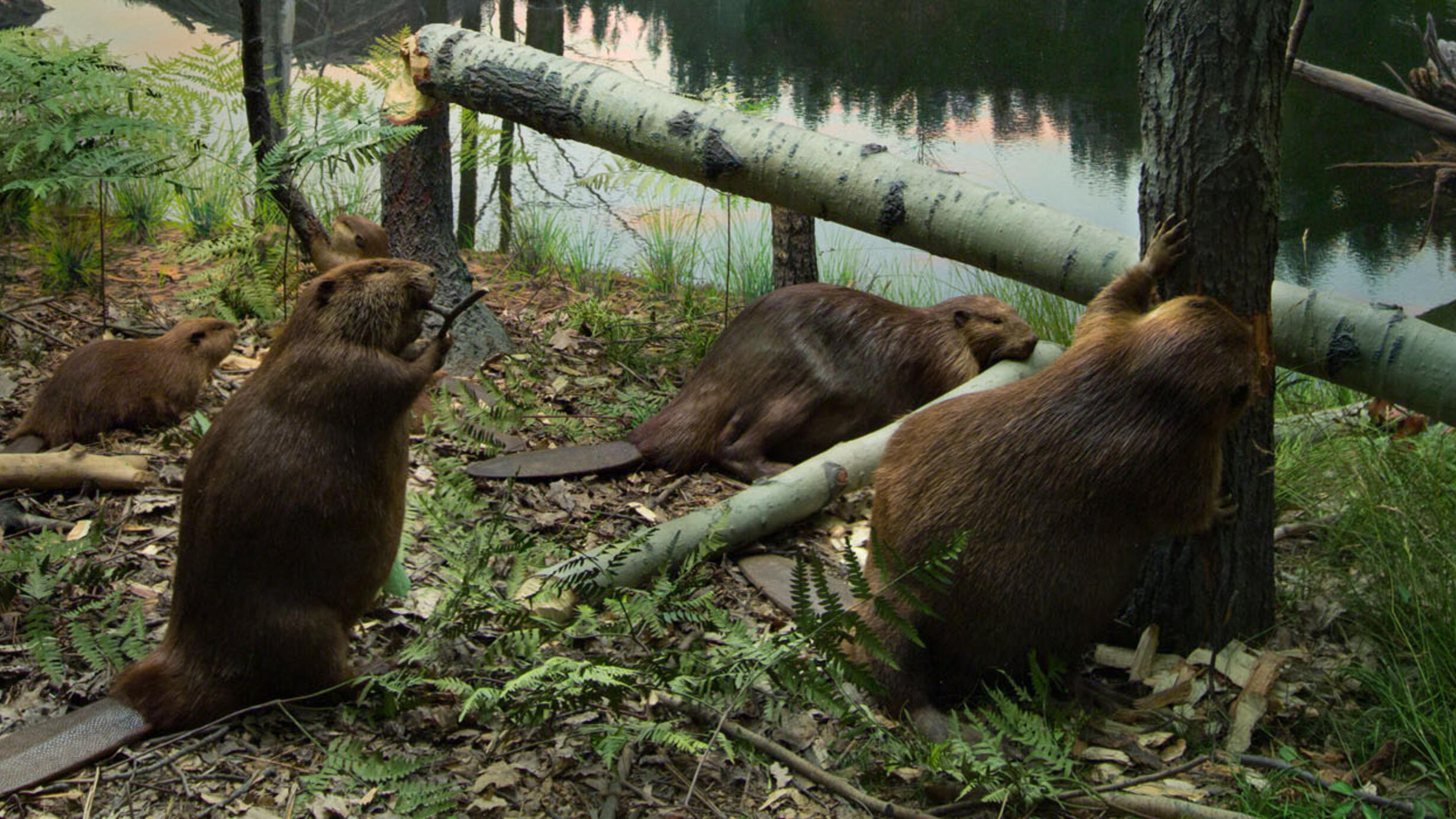North American Beaver
Part of Hall of North American Mammals.

July evening, Central Michigan
The beaver is not your typical rodent. It’s the largest one on the continent, and the only one that can cut down mature trees. Beavers use the timber to build large, elaborate nests—dome-shaped lodges with underwater entrances— inside ponds. If there is no pond, beavers will create one by building a dam to block a stream. The resulting moat around their lodges keeps wolves, coyotes and other predators at bay.
As semiaquatic rodents, beavers have closeable ears and nostrils, webbed hind feet and very dense fur coats. Their paddlelike tails appear to be covered in scales like a fish, but they aren’t. Rather, the skin is grooved in a scaly pattern, which makes the thick tail more flexible.
Beaver Pond
Hoister Creek, Michigan
Beavers can drastically alter landscapes. Working in family groups of four to eight, a beaver colony can cut down more than a ton of trees per year. This colony has dammed a stream with logs, mud and stones to make a pond. The land is so newly flooded that some trees have not yet drowned.
By altering streams, beavers expand wetlands, offering rich habitat for other species. Beaver ponds can also control runoff and reduce erosion. Eventually, this pond will clog with sediment. At that point, or when all accessible trees are cut, the colony will abandon its effort and begin again elsewhere.